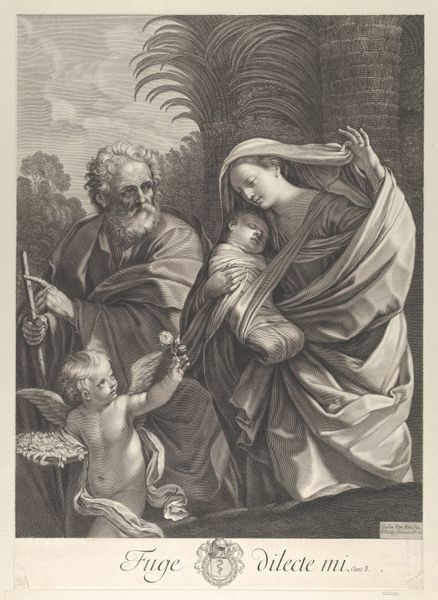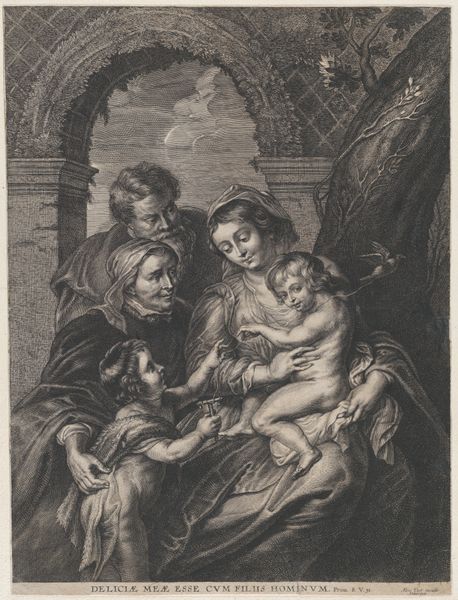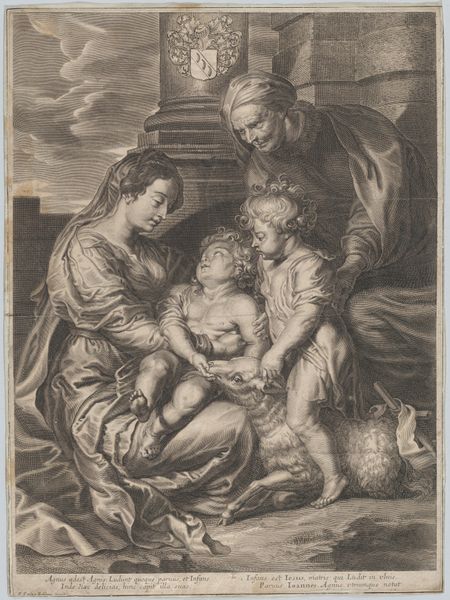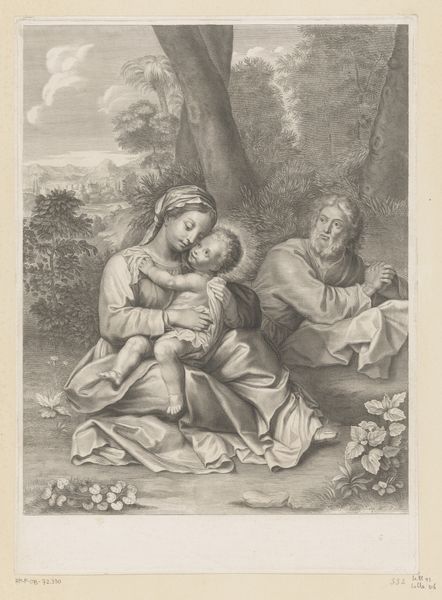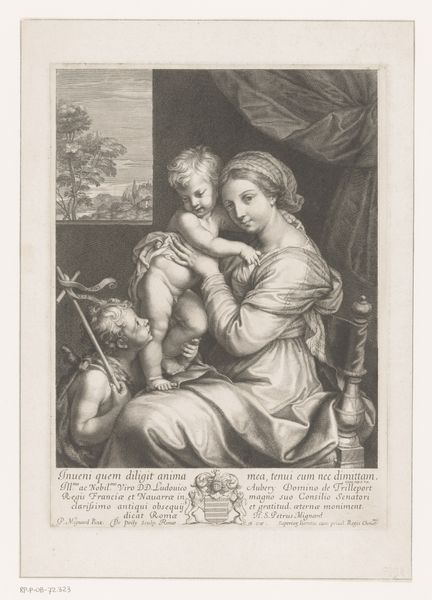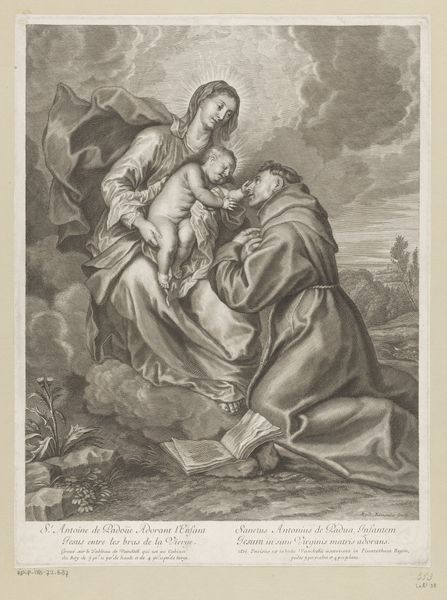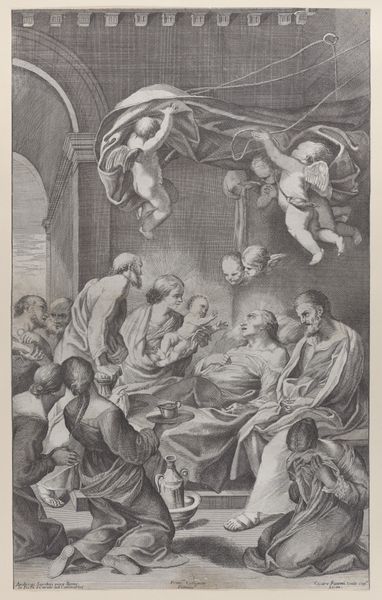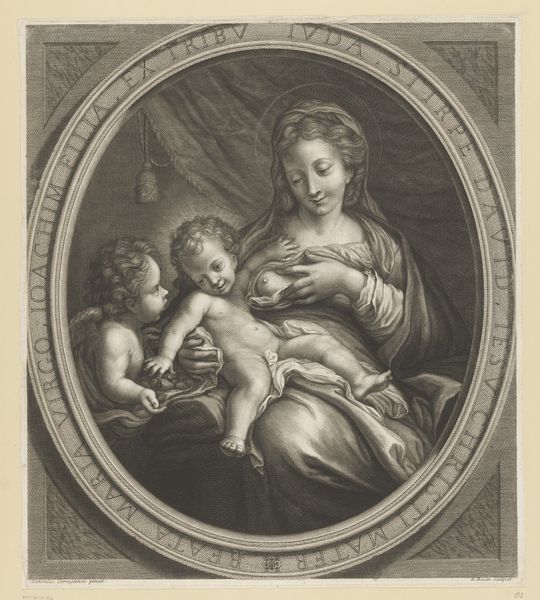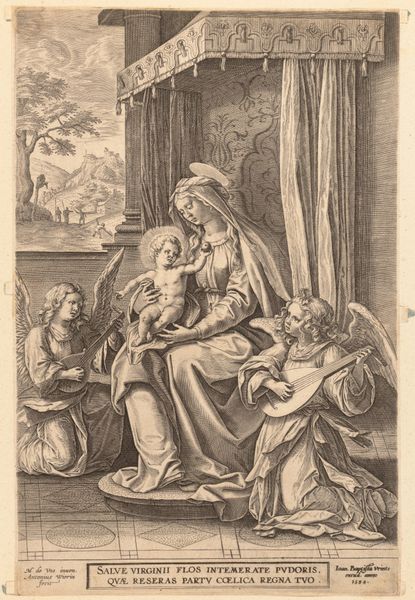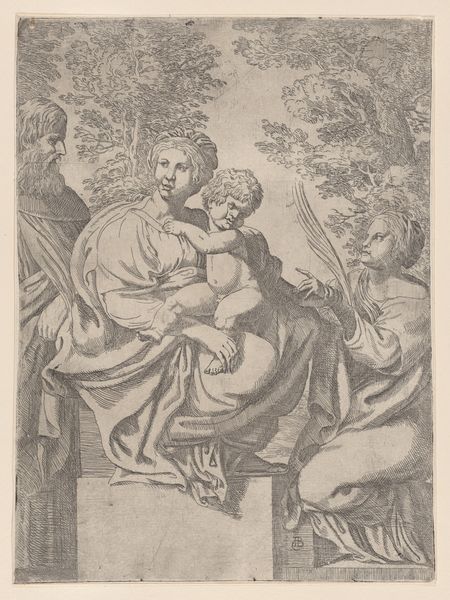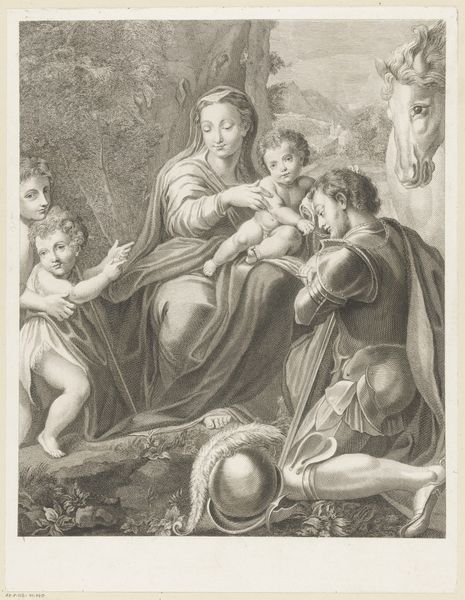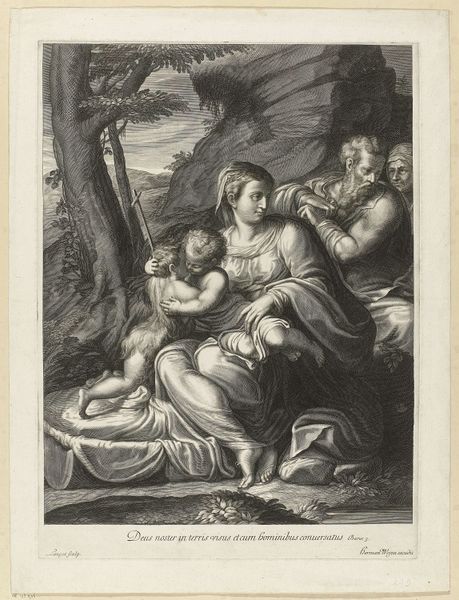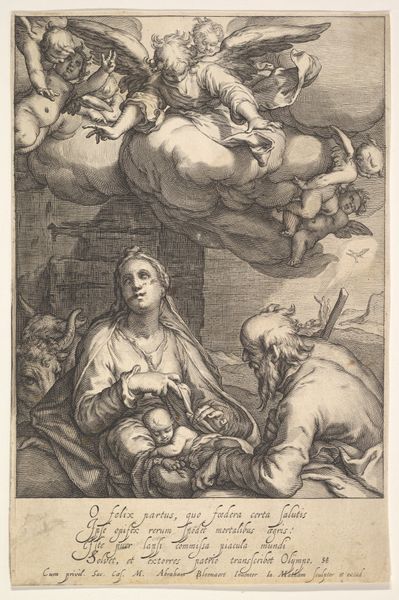
Leopold Willem, landvoogd der Zuidelijke Nederlanden, in aanbidding voor Madonna 1647 - 1675
0:00
0:00
lucasvorstermani
Rijksmuseum
print, engraving
#
portrait
#
baroque
# print
#
old engraving style
#
limited contrast and shading
#
portrait drawing
#
history-painting
#
engraving
Dimensions: height mm, width mm
Copyright: Rijks Museum: Open Domain
Curator: Here, we see the print "Leopold Willem, landvoogd der Zuidelijke Nederlanden, in aanbidding voor Madonna," dating somewhere between 1647 and 1675, by Lucas Vorsterman I. The way it merges the devotional with a formal portrait is quite interesting. What catches your eye? Editor: The stark contrast of Leopold Willem in full armour kneeling before the Virgin Mary definitely creates an odd juxtaposition. What do you see in this piece beyond the religious narrative? Curator: Let's consider the material. It's an engraving, a print. How does the reproducibility inherent in the medium challenge the supposed uniqueness of religious iconography and the aristocratic portrait? This wasn't a painting destined for a palace; it was designed for wider circulation. Think of it: devotional images entering everyday homes. Editor: So, the meaning shifts depending on its accessibility. Were prints like these common forms of propaganda or social messaging back then? Curator: Precisely. We see the Baroque style, but through the lens of its production. The "limited contrast and shading" that some describe isn’t just an aesthetic choice; it’s also a factor of the engraver's labour, the ease of replicating the image, and ultimately, its affordability and spread among a particular social stratum. Think about the distribution network needed! Who profited? How were these prints used? Were they commodities or objects of devotion or both? Editor: I never thought of it that way before! It’s like a Baroque-era meme, spreading ideology. Curator: Exactly! We’re less concerned with the “artistic genius” of Vorsterman and more interested in how the mechanics of image production shaped the dissemination of power and faith. It encourages me to investigate other pieces from him, which appear on fabric too. Fascinating, don't you think? Editor: Yes, it gives a fresh perspective to understand art as part of its socio-economic environment. Thanks for that explanation!
Comments
No comments
Be the first to comment and join the conversation on the ultimate creative platform.
